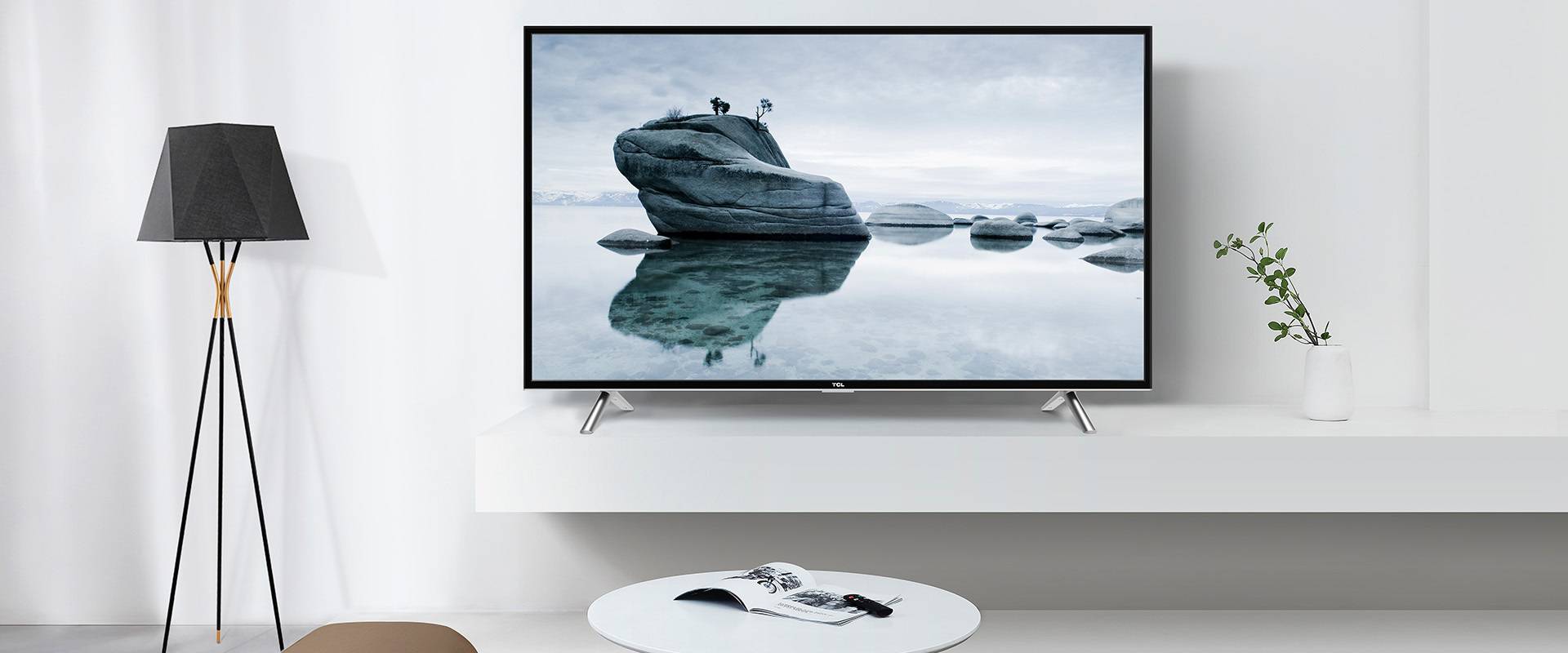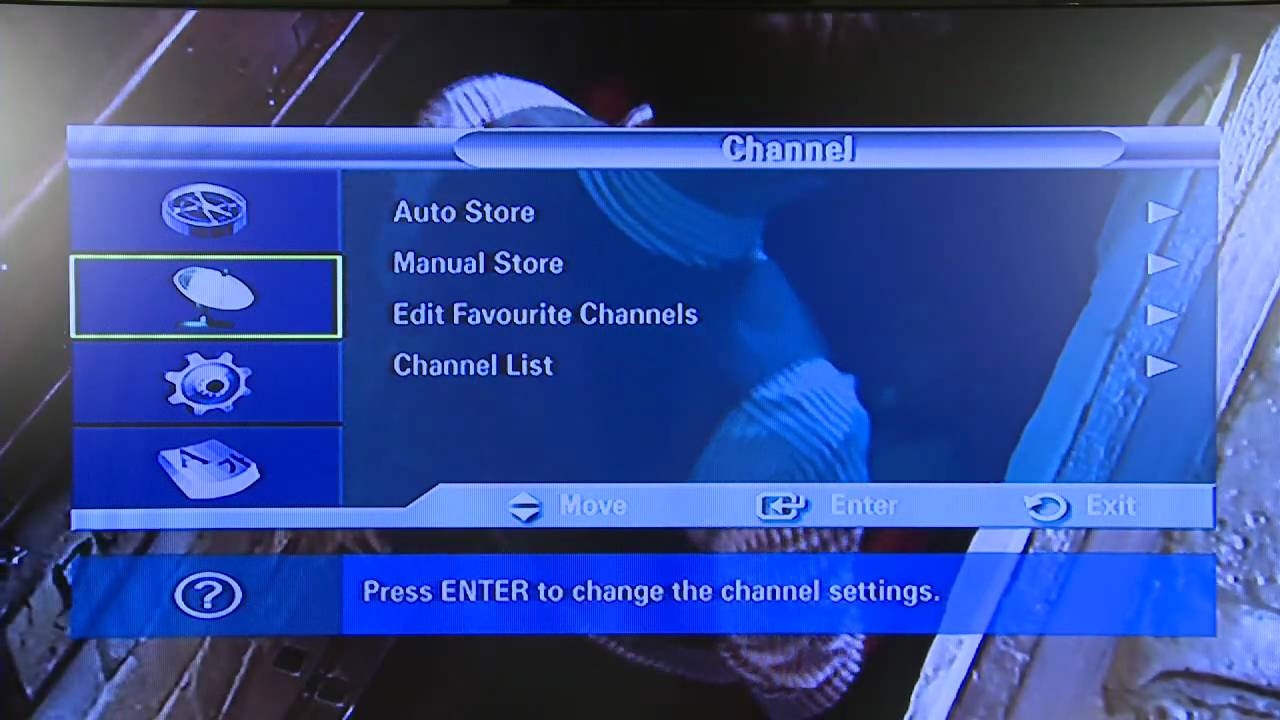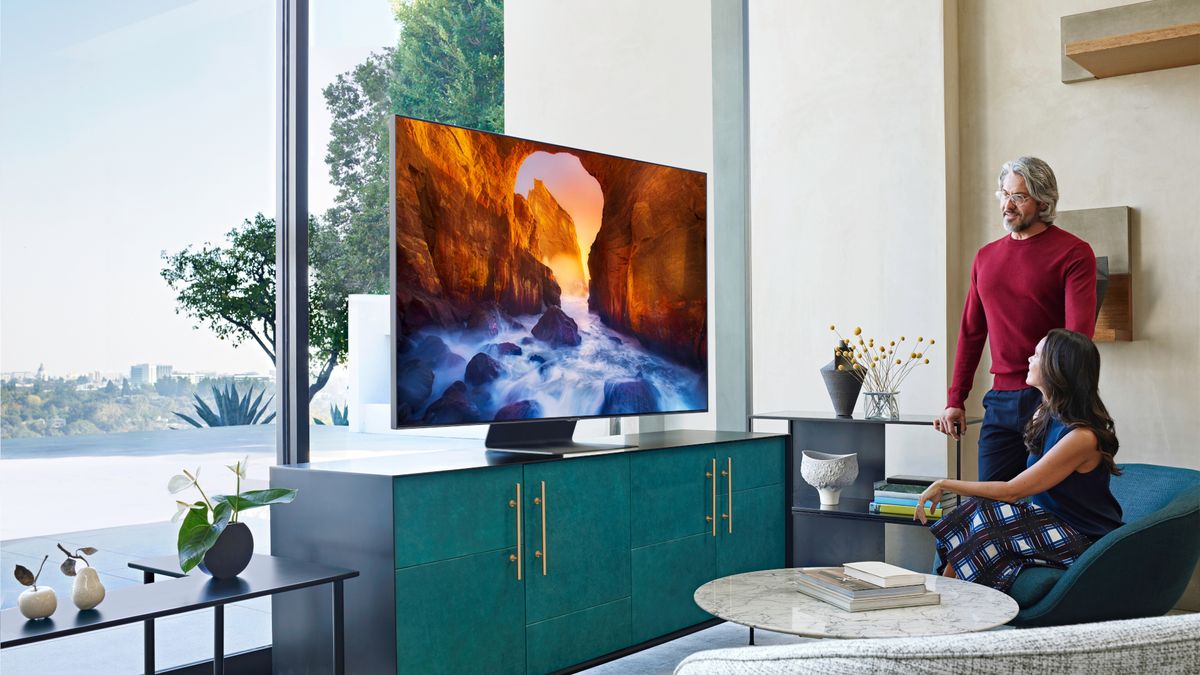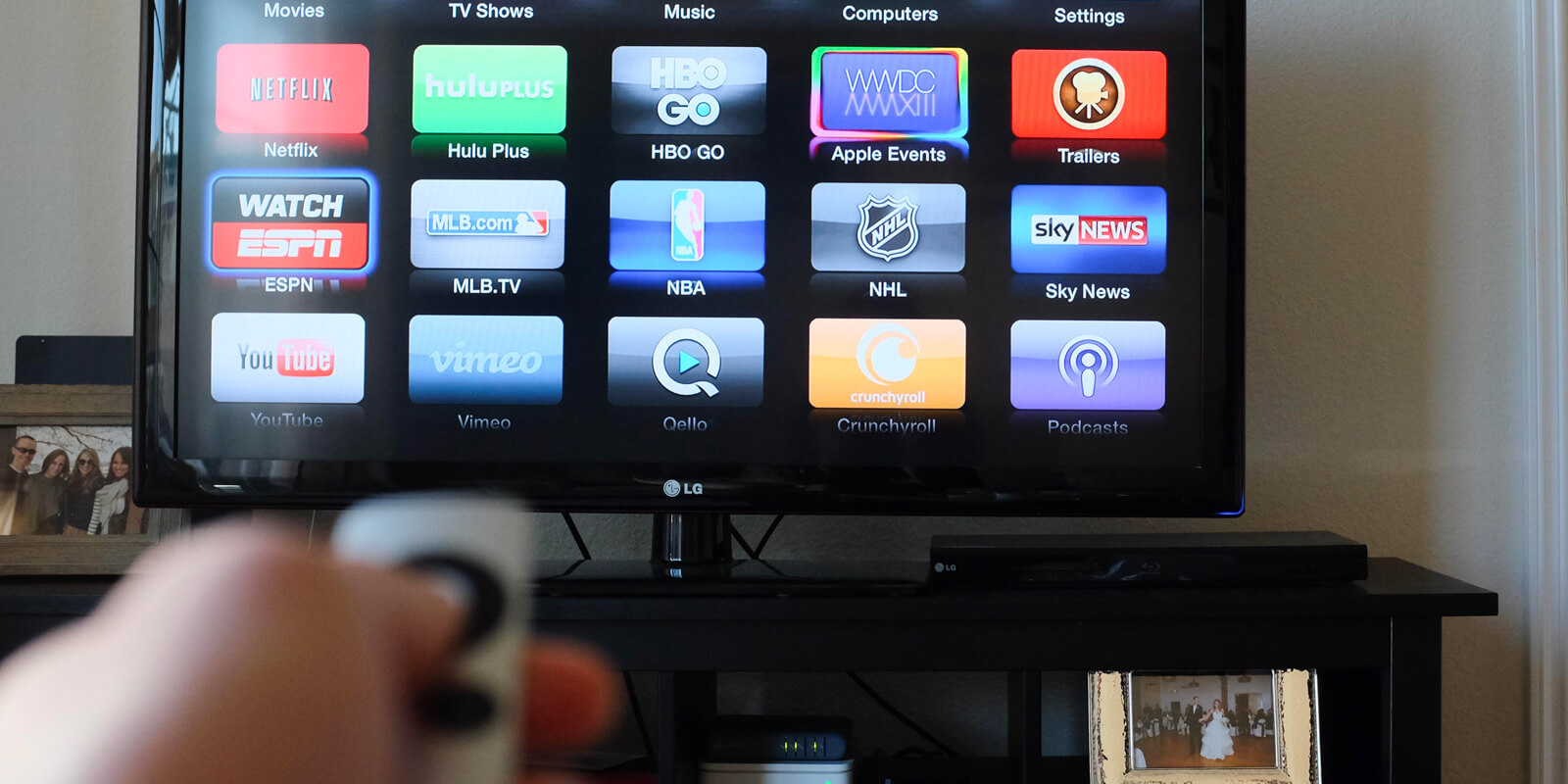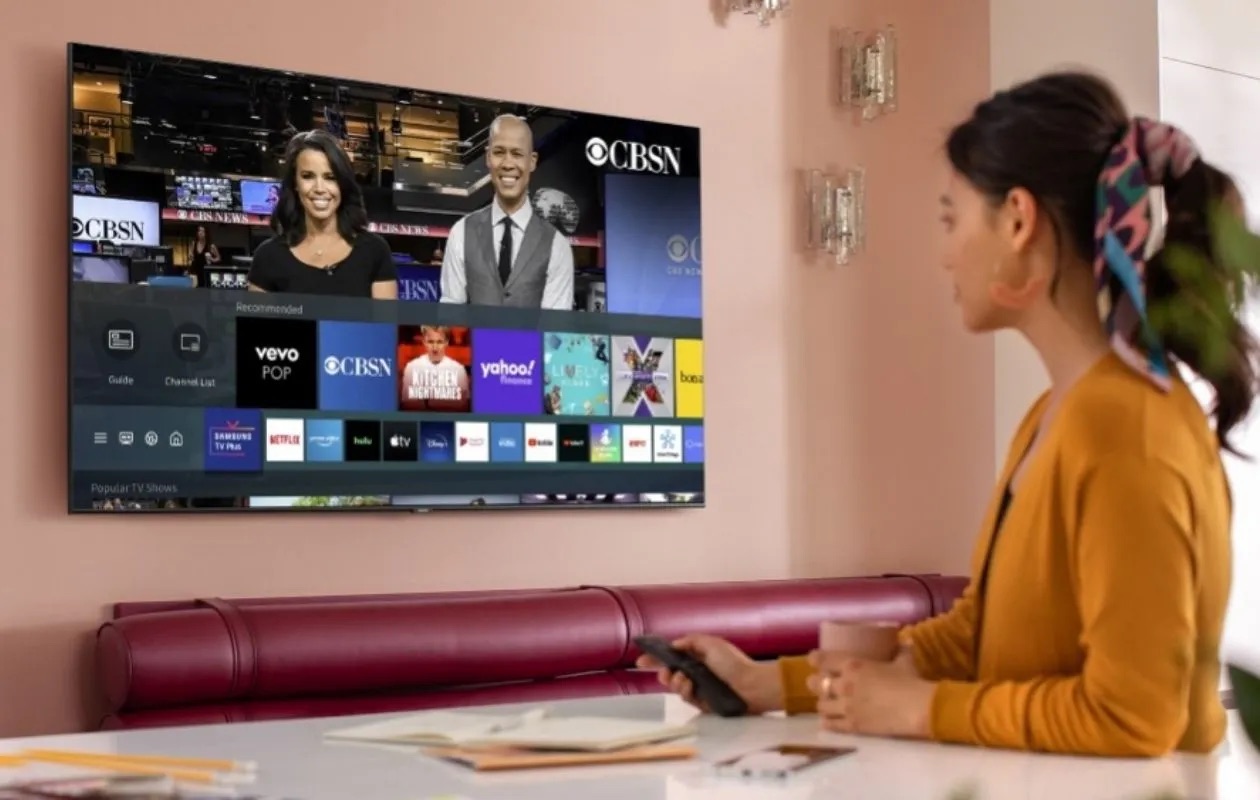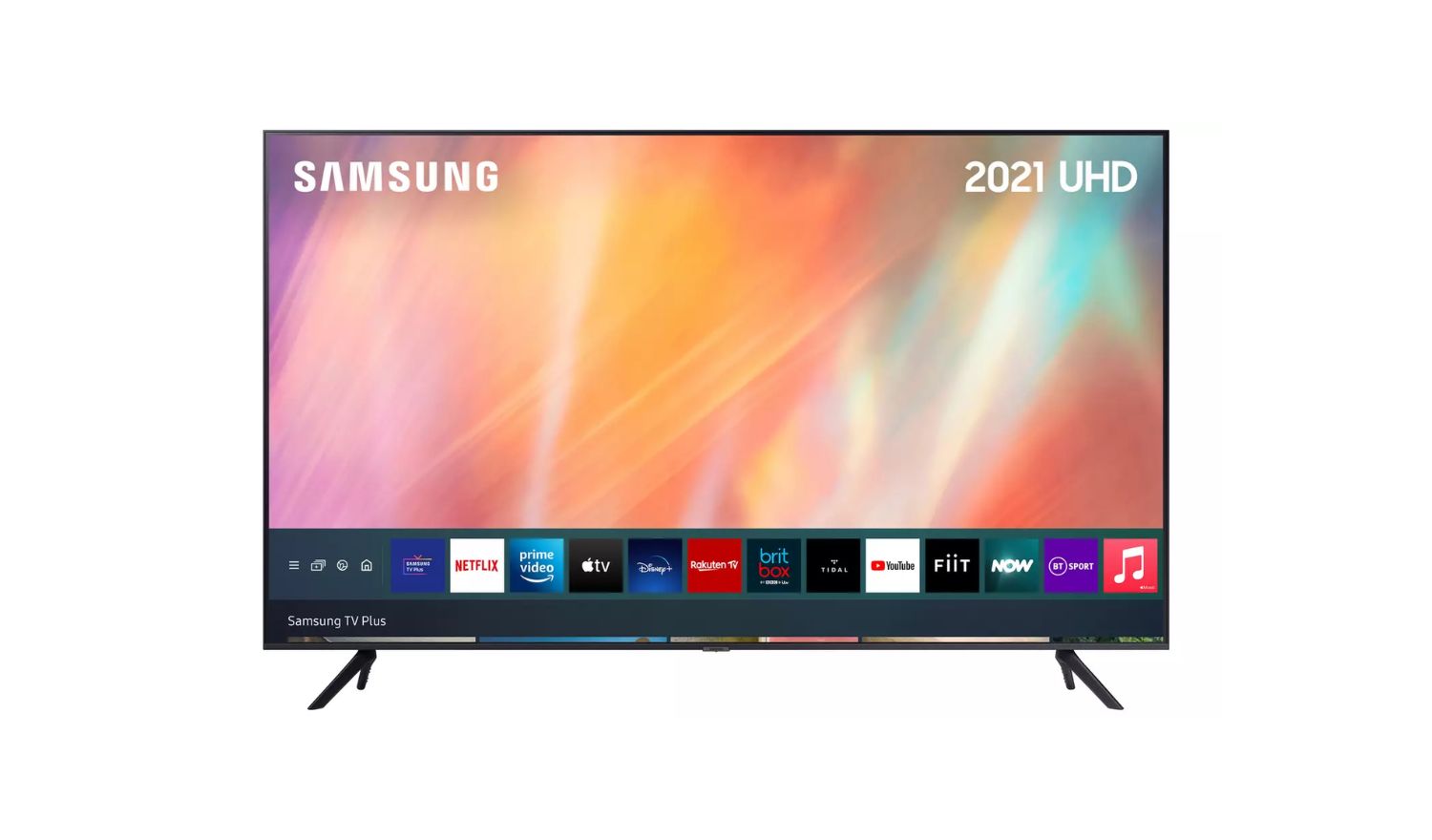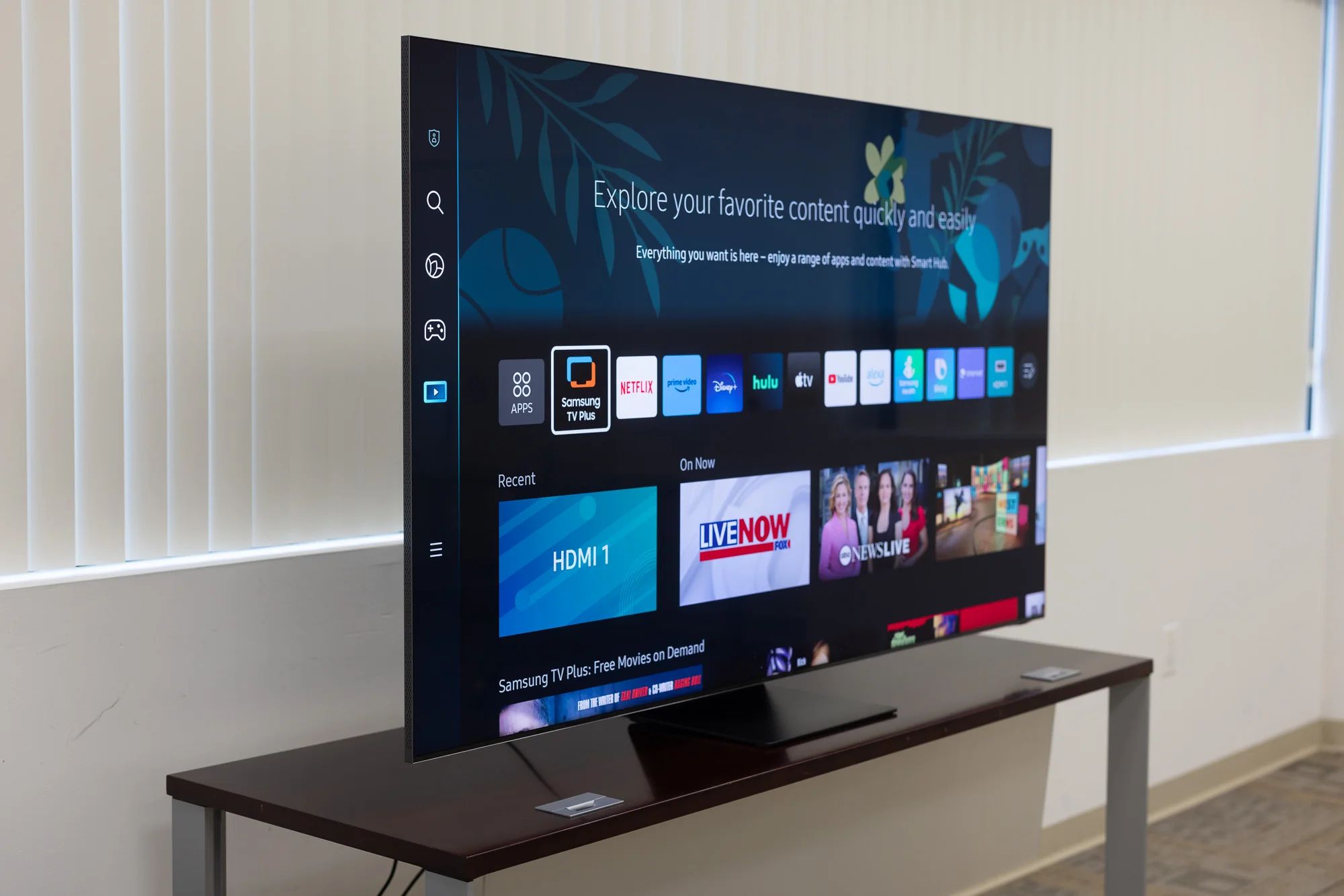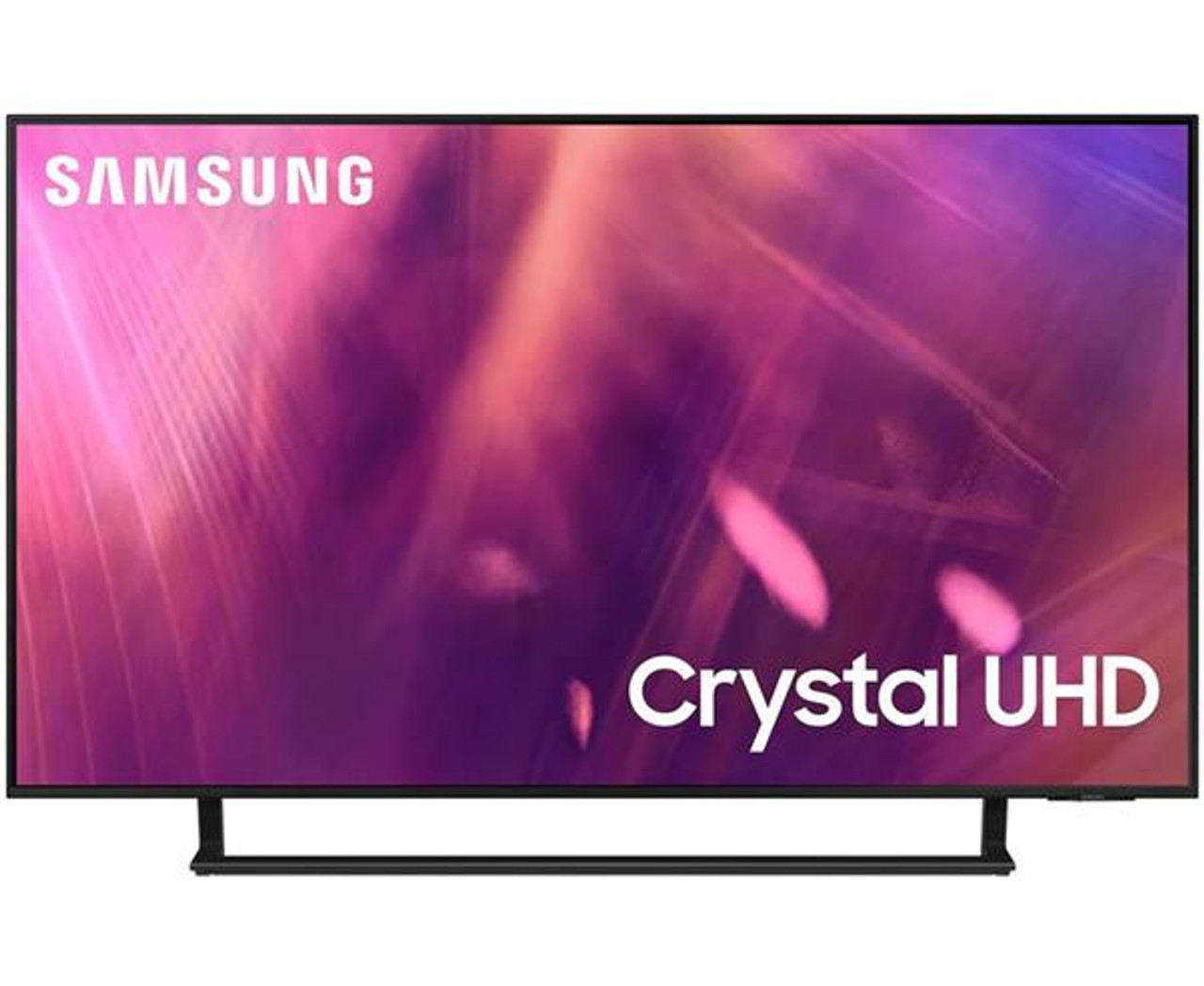Introduction
Welcome to the world of high-definition entertainment with your Samsung LED TV. With its sleek design and advanced technology, your television offers an immersive viewing experience. However, to truly make the most of your Samsung LED TV, it’s essential to ensure that you have the best picture quality.
Calibrating your TV allows you to tweak various settings and optimize the picture according to your preferences and the specific conditions in your viewing environment. Whether you are an avid movie buff, a sports enthusiast, or a passionate gamer, getting the right picture settings can make a world of difference in your overall viewing experience.
In this guide, we will take you through the steps to set the best picture on your Samsung LED TV. From adjusting the backlight and contrast to fine-tuning the color and sharpness, we will cover all the essential settings that you need to know. Additionally, we will explore different picture modes and how they can enhance your viewing experience.
Furthermore, we will discuss advanced settings such as motion settings, aspect ratio adjustment, and optimizing the picture for gaming. We will also delve into viewing angle considerations and provide recommendations to ensure that everyone in the room can enjoy the best image quality.
By following the instructions in this guide and taking some time to experiment with the settings, you can achieve a truly stunning and immersive picture on your Samsung LED TV. Let’s dive in and unlock the full potential of your television!
Calibrating Your Samsung LED TV
One of the first steps in setting the best picture on your Samsung LED TV is calibrating the display settings. This process allows you to adjust various parameters to achieve optimal brightness, contrast, color accuracy, and sharpness. Proper calibration enhances the overall viewing experience and ensures that you get the most out of your television.
Start by accessing the picture settings on your Samsung LED TV. Press the “Menu” button on your remote control and navigate to the “Picture” or “Display” settings. Here, you will find a range of options to modify the picture quality.
The two fundamental settings to adjust are the backlight and contrast. The backlight controls the brightness of the entire screen, while the contrast determines the difference between the lightest and darkest parts of the image. Finding the right balance between these two settings is essential for achieving vibrant colors and sharp details.
Experiment with different values for the backlight and contrast settings to find the optimal levels for your viewing environment. Generally, a higher backlight setting is suitable for well-lit rooms, while a lower setting is preferable for dimly lit or dark rooms. Adjust the contrast to ensure that dark areas of the image remain visible without losing detail in brighter areas.
Once you have adjusted the backlight and contrast, it’s time to fine-tune the color and sharpness. Samsung LED TVs offer various presets for color settings, such as “Standard,” “Dynamic,” “Movie,” and “Game.” These presets are designed to cater to different types of content and viewing preferences.
Experiment with these presets and select the one that best suits your viewing needs. If you prefer more accurate and natural colors, the “Movie” mode is a good starting point. However, if you want vibrant and punchy colors, the “Dynamic” mode might be more appealing.
In addition to color presets, you can also manually adjust the color temperature, saturation, and tint. Play around with these settings until you achieve a balance that pleases your eyes and accurately represents the content you’re watching.
Adjusting the Backlight and Contrast
When it comes to achieving the best picture quality on your Samsung LED TV, adjusting the backlight and contrast settings is crucial. These settings allow you to control the brightness and contrast of the display, ensuring that you have a visually pleasing and immersive viewing experience.
Start by accessing the picture settings on your Samsung LED TV through the menu options. Look for the “Picture” or “Display” settings and navigate to the backlight and contrast controls.
The backlight setting determines the brightness level of the entire screen. Generally, higher backlight settings result in brighter images, while lower settings create a more subdued or dimly lit appearance. The appropriate backlight level depends on the lighting conditions in your viewing environment.
If you are watching TV in a room with ample natural light or overall brightness, you may want to increase the backlight setting to improve visibility. On the other hand, if you are in a dimly lit or dark room, reducing the backlight level can help avoid eye strain and provide a more comfortable viewing experience.
While adjusting the backlight, it’s essential to find a balance that allows for clear visibility without washing out the colors or losing detail in darker areas. Take some time to experiment with different backlight levels until you find the one that suits your preferences and the specific conditions of your viewing environment.
Next, let’s move on to the contrast setting. Contrast refers to the difference between the lightest and darkest elements in an image. It helps produce vibrant colors, enhance details, and create a more lifelike viewing experience.
A higher contrast setting emphasizes the difference between bright and dark areas, resulting in a more pronounced and dynamic image. However, setting the contrast too high can lead to a loss of detail in darker regions and make the picture appear unnatural. On the other hand, a lower contrast setting may make the image appear flat and lack depth.
Find a balance that maintains detail in both bright and dark areas without sacrificing overall image quality. Adjust the contrast setting until you achieve a pleasing visual balance that suits your preferences and enhances the content you are watching.
Remember, these settings may vary depending on your personal preferences and the specific conditions of your viewing environment. Take the time to fine-tune the backlight and contrast settings to achieve the best picture quality on your Samsung LED TV. By doing so, you can ensure a captivating and enjoyable viewing experience.
Setting the Color and Sharpness
Another crucial aspect of achieving the best picture quality on your Samsung LED TV is adjusting the color and sharpness settings. These settings allow you to enhance the overall visual experience by fine-tuning the color accuracy and sharpness of the displayed images.
Start by accessing the picture settings on your Samsung LED TV. Look for the “Picture” or “Display” settings in the menu options. Within these settings, you will find options to adjust the color and sharpness.
The color settings on your Samsung LED TV may include presets such as “Standard,” “Movie,” and “Dynamic.” These presets are designed to cater to different types of content and viewing preferences. Choose the preset that aligns with your visual preferences and the type of content you are watching.
If you prefer more accurate and natural colors, the “Movie” mode is a good starting point. This mode typically offers a balanced blend of color accuracy and richness. On the other hand, if you prefer vibrant and punchy colors, the “Dynamic” mode may be more appealing. However, keep in mind that dynamic settings may exaggerate colors and may not accurately represent the intended artistic representation of the content.
In addition to the color presets, you can also manually adjust the color temperature, saturation, and tint. The color temperature setting influences the overall warmth or coolness of the image. Experiment with different color temperature levels until you achieve a visually pleasing balance.
Adjusting the saturation level can enhance the richness and vibrancy of the colors. However, be cautious not to over-saturate the image, as it can lead to an unnatural and exaggerated appearance. Strive for a balance that brings out the best colors without sacrificing realism.
The tint setting controls the balance between the green and magenta tones in the image. It can be adjusted to correct any noticeable color cast in the displayed content. Fine-tune the tint setting until the colors appear natural and accurate.
Next, let’s move on to the sharpness setting. Sharpness determines the clarity and detail of the displayed image. It adjusts the level of fine details and edges present in the picture.
While it may be tempting to set the sharpness level to its maximum value, doing so can lead to an artificially enhanced image that may introduce visual artifacts or a “halo” effect around objects. Instead, aim for a subtle level of sharpness that enhances details without creating an artificial appearance.
Gradually increase the sharpness setting and observe the effect on the displayed image. Fine-tune it until you achieve a balance that enhances details without introducing unwanted artifacts or making the picture appear too sharp.
By adjusting the color and sharpness settings on your Samsung LED TV, you can fine-tune the visual experience and achieve the best picture quality. Take the time to experiment with different presets and manual adjustments until you find the optimal settings that meet your preferences and enhance the content you are watching.
Picture Mode Options
Your Samsung LED TV offers a variety of picture modes that are tailored to different types of content and viewing preferences. These picture modes adjust various display settings to optimize the picture quality for specific scenarios. Understanding the available picture modes can help you enhance the visual experience based on the type of content you are watching.
Here are some common picture modes you may find on your Samsung LED TV:
- Standard: The Standard mode is a balanced setting that aims to provide a natural and accurate representation of colors and image quality. It is suitable for general TV viewing.
- Movie/Cinema: The Movie or Cinema mode is designed to replicate the cinematic experience, offering more accurate colors and subtle picture enhancements. This mode is ideal for watching movies or other cinematic content.
- Dynamic: The Dynamic mode is known for its vibrant and punchy colors. It enhances contrast and saturation to make the picture more eye-catching. This mode is popular for sports programming or content with vivid visuals.
- Game: The Game mode is specifically optimized for gaming. It reduces input lag and enhances responsiveness, allowing for a smoother and more immersive gaming experience. If you enjoy gaming on your TV, be sure to take advantage of this mode.
- Sports: The Sports mode emphasizes vivid colors and smooth motion to enhance the viewing experience for sports events. It aims to give you a stadium-like feel, making you feel immersed in the action.
These are just a few examples of the picture modes you may encounter on your Samsung LED TV. Each mode has its unique settings to maximize the visual impact based on the specific content and viewing preferences.
When selecting a picture mode, consider the type of content you are watching and the environment in which you are viewing it. For example, if you are watching a movie in a darkened room, the Movie or Cinema mode may be the most suitable. On the other hand, if you are watching a live sports event in a brightly lit area, the Sports mode may provide the best visual experience.
Experiment with different picture modes and find the one that best suits your preferences and the content you are enjoying. You can easily switch between modes through the menu settings of your Samsung LED TV. Remember that the optimal picture mode may vary depending on the specific conditions of your viewing environment and the type of content you are watching.
Take advantage of the available picture modes to enhance your viewing experience and enjoy the best picture quality that your Samsung LED TV can offer.
Fine-tuning the Picture Settings
While the preset picture modes on your Samsung LED TV can provide a good starting point, fine-tuning the picture settings allows you to customize the display to your specific preferences and the conditions of your viewing environment. By making adjustments to parameters such as brightness, contrast, color, and sharpness, you can further enhance the picture quality and create a personalized visual experience.
Start by accessing the picture settings menu on your Samsung LED TV. Look for options such as “Advanced Settings” or “Expert Mode” to gain access to additional settings that allow for more precise adjustments.
Brightness is a crucial setting that determines the overall luminance of the displayed image. Adjust the brightness to ensure that the picture enhances visibility without being too dull or overly bright. Strive for a balance that allows you to see shadow details while maintaining a comfortable viewing experience.
Contrast controls the difference between the darkest and brightest parts of the picture. Fine-tune this setting to ensure that the image has depth and accurate representation of highlights and shadows. Avoid setting the contrast too high, as it may result in loss of detail or visual artifacts. Aim for a balance that maintains detail in both dark and bright areas.
Color settings allow you to adjust the saturation, tint, and color temperature of the picture. Saturation controls the intensity of colors, while tint adjusts the balance between green and magenta tones. Experiment with these settings to achieve a color balance that pleases your eyes and accurately represents the content you are viewing. The color temperature settings influence the overall warmth or coolness of the image. Adjust the temperature to achieve a comfortable and natural-looking picture.
Sharpness determines the level of detail and crispness in the displayed image. Avoid setting the sharpness too high, as it can lead to artificial-looking edges and visual artifacts. Fine-tune the sharpness setting until you achieve a balance that enhances details without compromising image quality.
Additionally, explore other advanced settings such as noise reduction, motion interpolation, and gamma correction, if available. These settings can further fine-tune the picture quality based on your preferences.
As you make adjustments, it may be helpful to refer to test patterns or calibration tools to ensure accuracy. These tools can help you recognize and correct any issues with the picture quality, such as improper gamma representation or color inaccuracies.
Remember that fine-tuning picture settings is a personal preference, and what looks good to one person may not be the same for another. Take your time to experiment with different settings and find the combination that pleases your eyes and delivers the best picture quality for your Samsung LED TV.
Enhancing the Picture Quality with Motion Settings
When it comes to enjoying fast-paced action scenes or sports events on your Samsung LED TV, optimizing the motion settings can significantly enhance the picture quality and ensure a smooth and immersive viewing experience. By adjusting settings such as motion interpolation, motion blur reduction, and judder reduction, you can minimize motion blur and achieve sharper and more fluid on-screen movements.
Access the picture settings menu on your Samsung LED TV and look for options related to motion or motion enhancement. Depending on your TV model, you may find settings such as “Motion Interpolation,” “Auto Motion Plus,” or “Motion Smoothness.”
Motion interpolation, also known as the soap opera effect, is a technique that creates additional frames to reduce motion blur and make the on-screen movements appear smoother. Enabling this feature can give a more fluid and lifelike feel to fast-moving scenes but may result in a slightly artificial look to some viewers. Experiment with different levels of motion interpolation to find the level that suits your preferences without compromising the overall picture quality.
Motion blur reduction, on the other hand, controls the amount of blur that occurs when objects are in motion. Increasing this setting can reduce the perceived blurriness and result in clearer images during fast-paced scenes. However, higher settings may introduce visual artifacts or make the picture appear too sharp. Find the right balance where motion blur is minimized without compromising the overall display quality.
Judder reduction is another important setting for enhancing motion quality. It helps smooth out juddering or stuttering that may be present when movies or TV shows are displayed at a lower frame rate. Adjust this setting to suit your preferences and ensure that on-screen movements appear smooth and natural.
It’s worth noting that while motion settings can improve the viewing experience, they may also introduce artifacts or inaccuracies in the picture quality. Some viewers prefer a more cinematic feel and choose to disable or minimize these settings. Ultimately, the optimal motion settings depend on your personal preferences and the content you are watching.
As you adjust the motion settings, it’s important to consider the specific conditions of your viewing environment. If you are watching in a dimly lit room, motion enhancements might work well. However, if you are in a bright and well-lit space, reducing the motion settings can help avoid potential distractions and maintain a more natural visual experience.
Take the time to experiment with different motion settings and observe the impact on the on-screen movements. Find the combination that enhances the picture quality while maintaining a comfortable and enjoyable viewing experience for your Samsung LED TV.
Adjusting the Aspect Ratio
The aspect ratio refers to the proportional relationship between the width and height of the displayed image on your Samsung LED TV. It determines the shape and size of the picture, and adjusting the aspect ratio is essential to ensure that the content is displayed correctly and without distortion.
Access the picture settings menu on your Samsung LED TV and look for options related to aspect ratio or screen size. You will typically find a range of aspect ratio options to choose from.
Most modern TVs have a default aspect ratio set to “16:9,” which is the standard for high-definition content. However, depending on the source material you are watching, you may need to adjust the aspect ratio to match the original aspect ratio of the content.
Here are some common aspect ratio settings you may come across:
- 16:9: This is the standard widescreen aspect ratio and is suitable for most HD content.
- 4:3: This is the traditional aspect ratio for older non-widescreen content. Use this setting if you are watching older movies or shows that are not in widescreen format.
- Zoom: The zoom setting allows you to enlarge the image to fill the screen horizontally or vertically. Be cautious when using this setting, as it may result in cropping or stretching of the picture.
- Fit to Screen: This setting adjusts the aspect ratio to fit the entire image on the screen without cropping or stretching. It is useful when watching content in non-standard aspect ratios.
When selecting the appropriate aspect ratio, consider the content you are watching and the original aspect ratio in which it was intended to be viewed. For example, if you are watching a widescreen movie, the 16:9 aspect ratio will likely provide the best viewing experience. On the other hand, if you are watching an older TV show in a 4:3 aspect ratio, switching to the appropriate setting will prevent the image from appearing stretched or distorted.
It’s important to note that some content may have black bars or letterboxing, which are intentional and serve to maintain the original aspect ratio. These black bars are not a result of incorrect aspect ratio settings on your TV. Similarly, some content may be cropped or stretched due to incompatible aspect ratios.
Adjusting the aspect ratio should be done on a case-by-case basis, depending on the specific content you are watching. Make sure to select the aspect ratio that preserves the intended viewing experience and avoids unnecessary cropping, stretching, or distortion.
By ensuring that the aspect ratio is correctly adjusted, you can enjoy a visually pleasing and distortion-free viewing experience on your Samsung LED TV.
Optimizing the Picture for Gaming
If you’re an avid gamer, you’ll want to ensure that your Samsung LED TV is optimized to deliver the best picture quality and responsiveness during gameplay. By adjusting specific settings and configurations, you can enhance your gaming experience and enjoy stunning visuals with minimal input lag.
Access the picture settings on your Samsung LED TV and look for options tailored specifically for gaming. These options may be labeled as “Game Mode,” “Gaming Enhancements,” or similar terms.
Enabling Game Mode is the first step to optimize your TV for gaming. Game Mode reduces input lag by disabling unnecessary video processing and post-effects that can introduce delays between your inputs and the on-screen response. This feature is especially important for fast-paced games that require quick reflexes and precision.
Additionally, many Samsung LED TVs offer automatic game detection, where the TV automatically switches to Game Mode when it detects a gaming device is connected. If this feature is available, it can save you the hassle of manually enabling Game Mode every time you start gaming.
Adjusting the backlight and contrast settings is crucial to ensure that game visuals are sharp and vibrant. Aim for a balance that maintains visibility of details in both bright and dark areas without sacrificing overall image quality.
Color settings can also play a role in optimizing the picture for gaming. Experiment with presets or manually adjust saturation, tint, and color temperature to achieve a balance that enhances game visuals and makes the colors pop without skewing the image quality.
When it comes to motion settings, different games may benefit from different settings. Some games may require smoother motion interpolation, while others may benefit from reduced motion blur. Try various settings to find what works best for the specific game you are playing.
As for the aspect ratio, most games are designed for the standard widescreen 16:9 aspect ratio. However, some games may have their own specific aspect ratios or resolution settings. Make sure to adjust the aspect ratio accordingly to match the game’s requirements and avoid any stretching or cropping of the image.
Lastly, there are additional gaming features that some Samsung LED TVs offer, such as variable refresh rate (VRR) or AMD FreeSync support. These features can help eliminate screen tearing and provide a smoother gaming experience. If your TV supports these features, look for the corresponding settings and enable them for an optimized gaming experience.
By optimizing your Samsung LED TV for gaming, you can enjoy visually immersive gameplay with minimal input lag. Take advantage of the specific gaming settings and configurations available on your TV to enhance your gaming experience and fully immerse yourself in the world of interactive entertainment.
Viewing Angle Considerations
When setting up your Samsung LED TV, it’s essential to consider the viewing angle and how it can impact your overall viewing experience. The viewing angle refers to the degree at which you can comfortably see the screen and still enjoy optimal picture quality.
Most modern LED TVs, including Samsung models, use an LCD panel with an LED backlight. While these panels offer excellent picture quality from straight-on viewing, they can experience color and contrast degradation when viewed from extreme angles.
When sitting directly in front of your TV, you’ll experience the best picture quality and color accuracy. However, as you move to the sides or off-center, the image may appear washed out, colors may shift, and the contrast may decrease.
It’s important to assess the typical seating arrangement in your viewing area and set up the TV accordingly. Ideally, the TV should be positioned at eye level when seated, ensuring a more comfortable and engaging viewing experience.
If your seating area allows for multiple viewing angles, consider choosing a TV with a broader viewing angle range or implementing adjustments to mitigate the effects of reduced viewing angles. Some TVs feature advanced panel technologies, such as IPS (In-Plane Switching), which provide wider viewing angles without significant loss of picture quality.
Another solution is to adjust the furniture arrangement in the room. Positioning seating areas at a more strategic angle, directly facing the TV, can help mitigate the negative impact of off-center viewing and maintain better picture quality.
Additionally, you can use swivel mounts or articulating wall mounts to adjust the TV’s position and angle for optimal viewing based on the seating arrangement.
Keep in mind that the viewing angle can also be impacted by room lighting. In brightly lit rooms, glare and reflections may be more pronounced, affecting the viewing angles and overall picture quality. Consider using curtains, blinds, or ambient lighting solutions to minimize glare and create a more conducive viewing environment.
When inviting guests or organizing viewing parties, be mindful of the seating arrangement to ensure that everyone has a comfortable viewing experience. Encourage guests to sit within the optimal viewing angle to maximize their enjoyment of the TV’s picture quality.
Awareness of viewing angle considerations and making necessary adjustments can significantly enhance the visual experience on your Samsung LED TV. By positioning the TV at the appropriate height, considering the viewing angles, and minimizing environmental factors that affect picture quality, you can enjoy the best possible viewing experience in any seating position.
Conclusion
Setting the best picture quality on your Samsung LED TV involves a combination of adjusting various settings, considering viewing angles, and optimizing for specific content, such as gaming. By taking the time to fine-tune the backlight, contrast, color, and sharpness settings, you can achieve a visually stunning and immersive viewing experience.
Calibrating your Samsung LED TV allows you to customize the picture to your preferences and the specific conditions of your viewing environment. Adjust the backlight and contrast to optimize brightness and contrast levels for optimal visibility and detail. Fine-tune the color settings to achieve accurate and vibrant colors that enhance the image quality. Experiment with sharpness settings to enhance details without sacrificing the overall picture quality.
Exploring the available picture modes and selecting the appropriate one based on the content you are watching can further enhance the viewing experience. Consider adjusting the aspect ratio to match the original format of the content and avoid distortion or cropping. Utilize gaming-specific settings to optimize your TV for gaming and minimize input lag for a smooth and responsive gaming experience.
Lastly, keep viewing angle considerations in mind when positioning your TV and seating arrangement. Be aware of how off-center viewing can impact picture quality and color accuracy, and make adjustments to ensure optimal viewing angles for everyone.
By applying these tips and tricks, you can fully unlock the potential of your Samsung LED TV and enjoy a visually captivating and immersive experience across a range of content, including movies, TV shows, sports, and gaming. Take the time to experiment and find the settings that suit your preferences and viewing environment, and prepare to be amazed by the outstanding picture quality that your Samsung LED TV can deliver.







